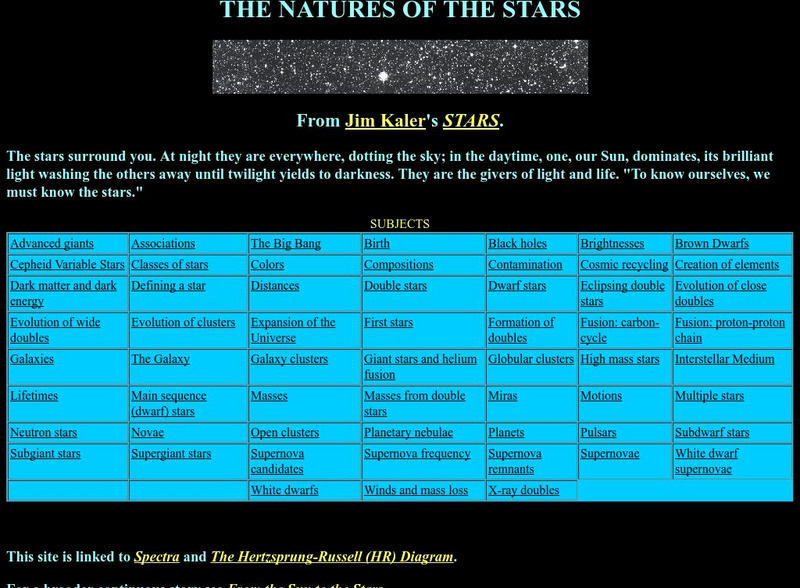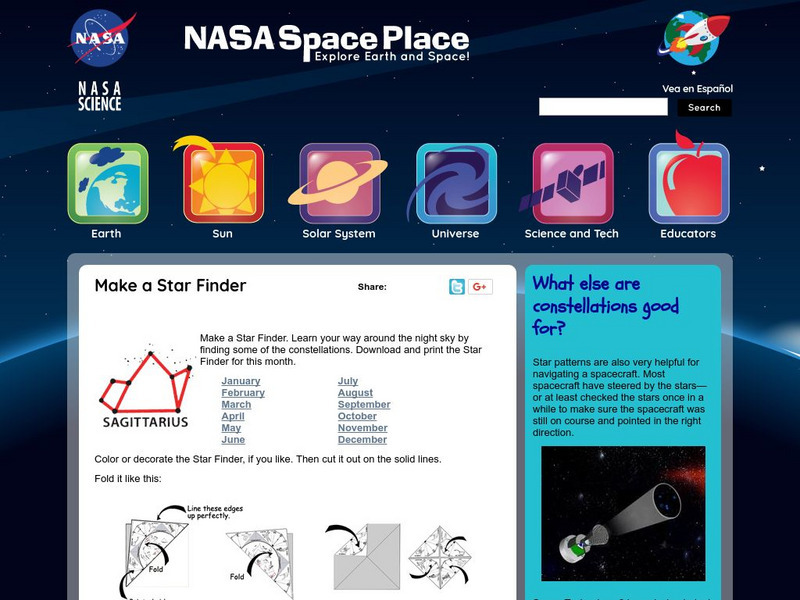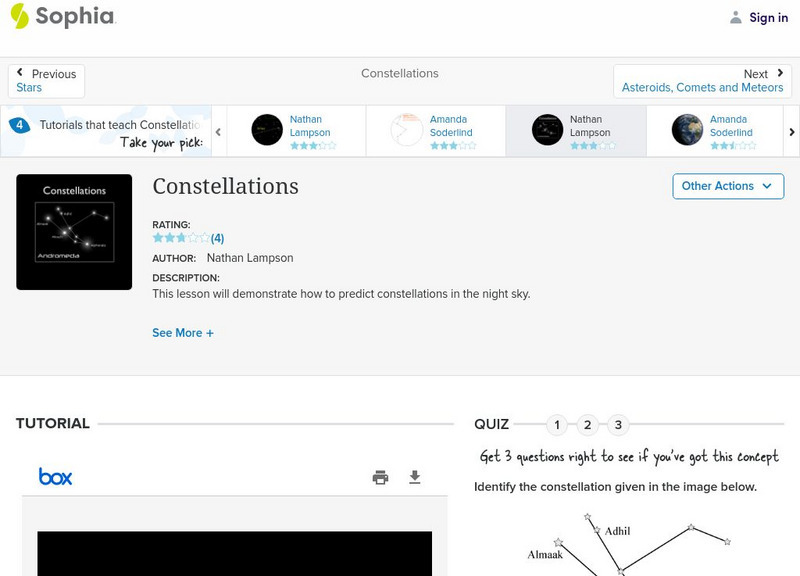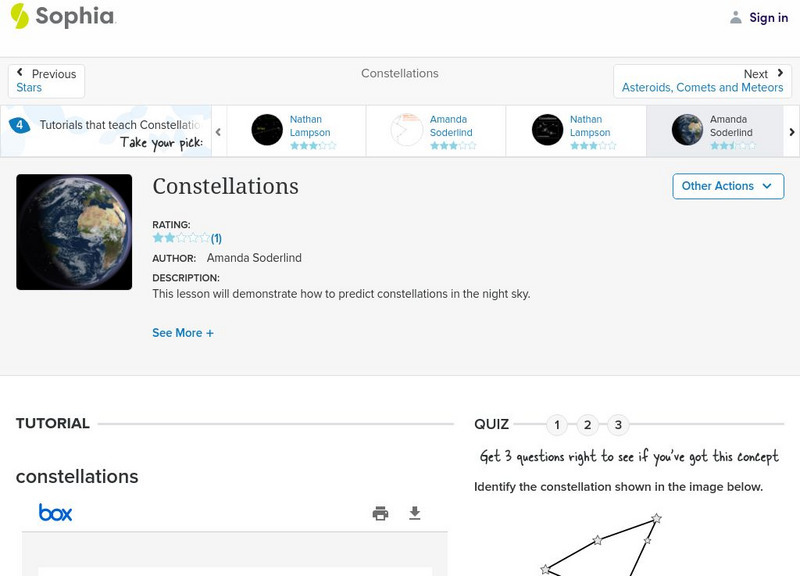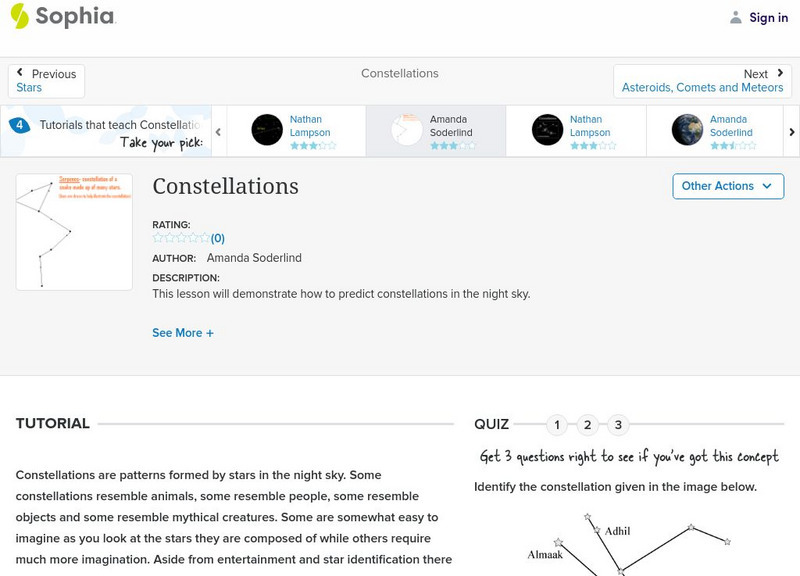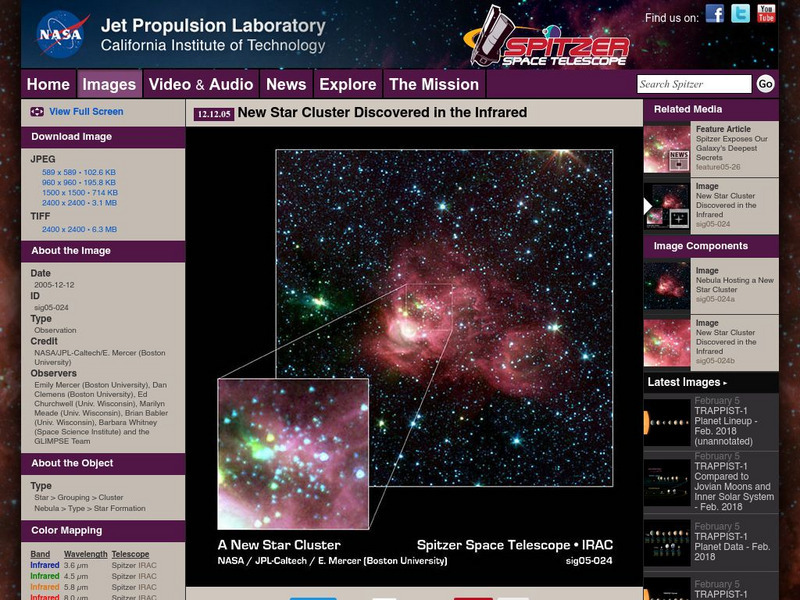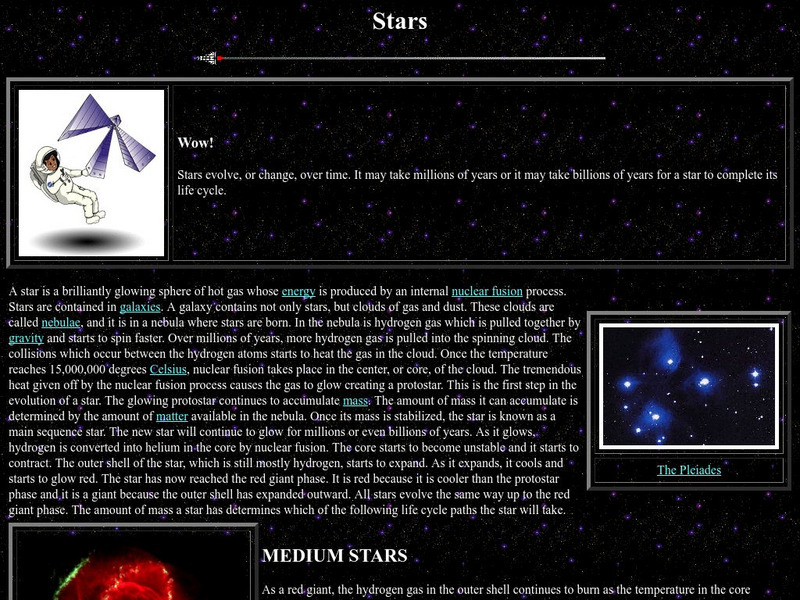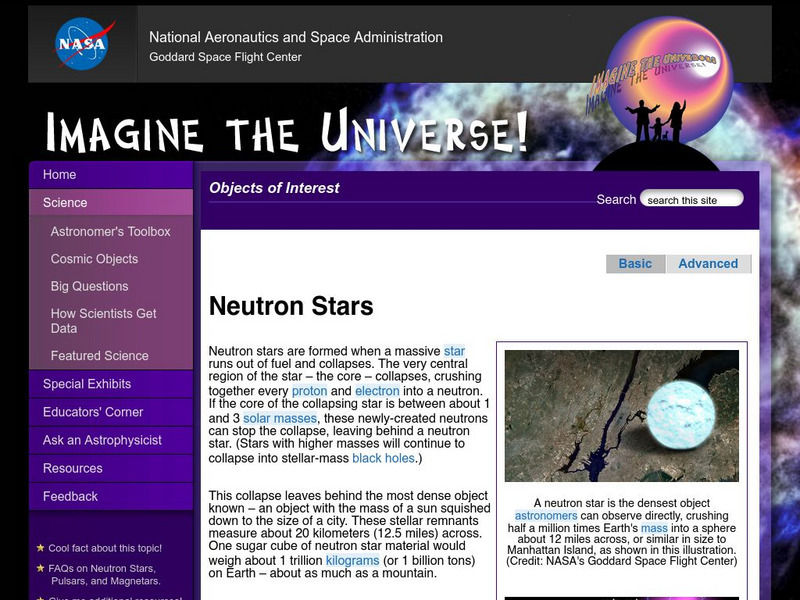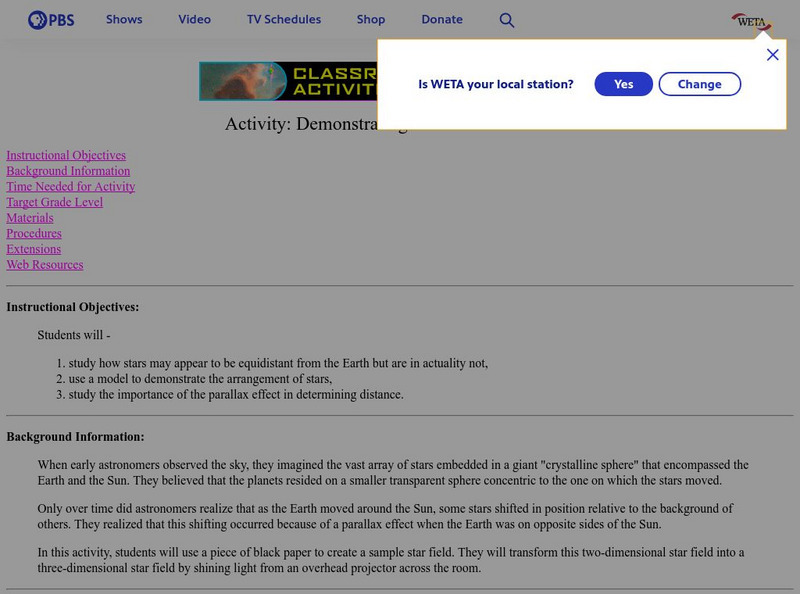Better Lesson
Better Lesson: Constellation Patterns
Fifth graders evaluate and communicate information on the apparent movement of constellations using a variety of resources: interactive star map, planisphere, videos, modeled demonstration, and online resources.
Education.com
Education.com: Star Unit [Pdf]
[Free Registration/Login Required] In this lesson, 5th graders will demonstrate their understanding of constellation patterns and earth movement by writing and illustrating a legend about a specific constellation.
University of Illinois
University of Illinois: Stars and Constellations: Neutron Stars and Pulsars
This resource provides a brief description of the relationship between a neutron star and a pulsar. It details the pulsing rate and death of a pulsar.
Science Buddies
Science Buddies: Changing Constellations
Do you like to look up into the night sky? There are so many stars, it can be mind boggling. Some ancient people marked time by the changes in star patterns. We still use changes in constellation patterns to mark astronomical time. This...
CK-12 Foundation
Ck 12: Fifth Grade Science: Earth Science: Stars
Investigate what constellations are and how to use light-years as a unit of distance in this module. Learn how to measure star distances in creative ways.
E-learning for Kids
E Learning for Kids: Science: Antarctica: Describe the Life Cycle of Stars
Discover the stars with Peter. At his mom's research center, help Peter learn constellations and learn about characteristics of stars.
NASA
Nasa: Make a Star Finder
Learning game and activity that teaches about the constellations by making a star finder to help locate them.
CK-12 Foundation
Ck 12: Plix: Scientific Notation: Light Years to the Centaurus Constellation
[Free Registration/Login Required] Study the diagram of the Centaurus Constellation, and then answer the challenge question to check for understanding.
Can Teach
Can Teach Lesson Plan: Graphing Constellations
For this lesson plan, students practice their graphing skills by following directions to recreate constellations.
NASA
Nasa: Make Star Cookies
This site from the National Aeronautics and Space Administration provides a fun project on stars and cookies. "Make these yummy star cookies with genuine star-colored centers you can see through." Plus, learn interesting facts about...
Mocomi & Anibrain Digital Technologies
Mocomi: What Is a Constellation?
Constellations are patterns formed by groups of stars. Take a look at some of the familiar constellations.
Ducksters
Ducksters: Astronomy for Kids: Constellations
Kids learn about the constellations in the science of astronomy. These stars that form patterns when viewed from the Earth have been studied since ancient times.
Mocomi & Anibrain Digital Technologies
Mocomi: What Is a Star?
Learn about stars, how they are formed, the biggest and smallest star, what they look like, well-known stars and constellations, and other interesting facts.
Sophia Learning
Sophia: Constellations: Lesson 2
This lesson will demonstrate how to predict constellations in the night sky. It is 2 of 4 in the series titled "Constellations."
Sophia Learning
Sophia: Constellations: Lesson 3
This lesson will demonstrate how to predict constellations in the night sky. It is 3 of 4 in the series titled "Constellations."
Sophia Learning
Sophia: Constellations: Lesson 1
This lesson will demonstrate how to predict constellations in the night sky. It is 1 of 4 in the series titled "Constellations."
Sophia Learning
Sophia: Constellations: Lesson 4
This lesson will demonstrate how to predict constellations in the night sky. It is 4 of 4 in the series titled "Constellations."
California Institute of Technology
Spitzer Science Center: A New Star Cluster
The image entitled, "A New Star Cluster" shows the formation of a new group of stars located in the Milky Way galaxy. The text below the image goes into detail on describing the various specifics of the image.
NASA
Nasa Star Child: Stars (Level 2)
This NASA site that explains the notable features of stars and constellations, including medium and massive stars. Many terms are clickable links to definitions. There is also a link to the Level 1 version of this site, which is written...
NASA
Nasa: Imagine the Universe: Neutron Stars and Pulsars
Discover what neutron stars and pulsars are and view pictures of them. Includes links to additional resources and lesson plans.
PBS
Star Map
This star map has five different constellations along with four newly discovered solar systems. If you are located in the northern hemisphere you can use this resource to locate stars.
NASA
Nasa: Imagine the Universe: X Ray Binary Stars
Site provides a brief introduction to binary stars. Additional resources for students and teachers on this topic are offered as well as related topics.
PBS
Pbs Teachers: Demonstrating the Distances of Stars
Investigate the use of the parallax effect for determining distance in space, and explore the arrangement and relative distance of stars in the galaxy. Create a sample star field and transform it into a three-dimensional model.
ClassFlow
Class Flow: Stars Project
[Free Registration/Login Required] This flipchart is a research project on stars, completed by first graders.


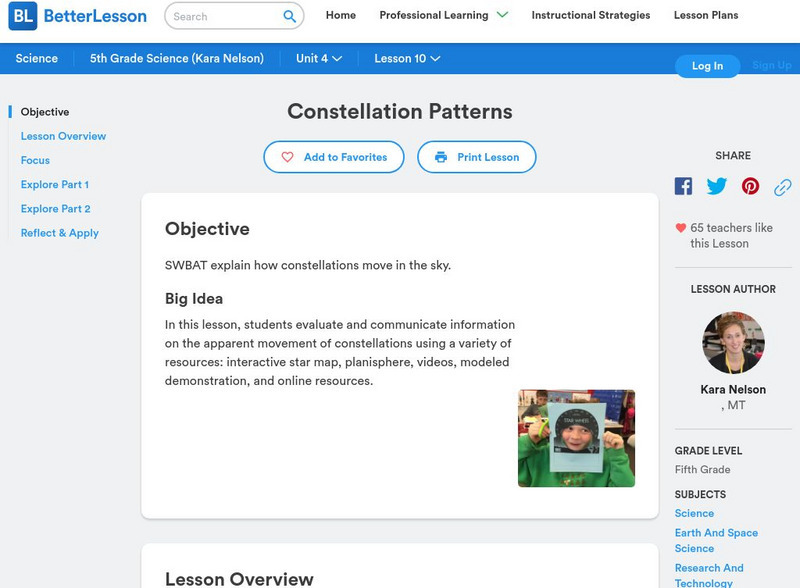
![Education.com: Star Unit [Pdf] Lesson Plan Education.com: Star Unit [Pdf] Lesson Plan](https://d15y2dacu3jp90.cloudfront.net/images/attachment_defaults/resource/large/FPO-knovation.png)
